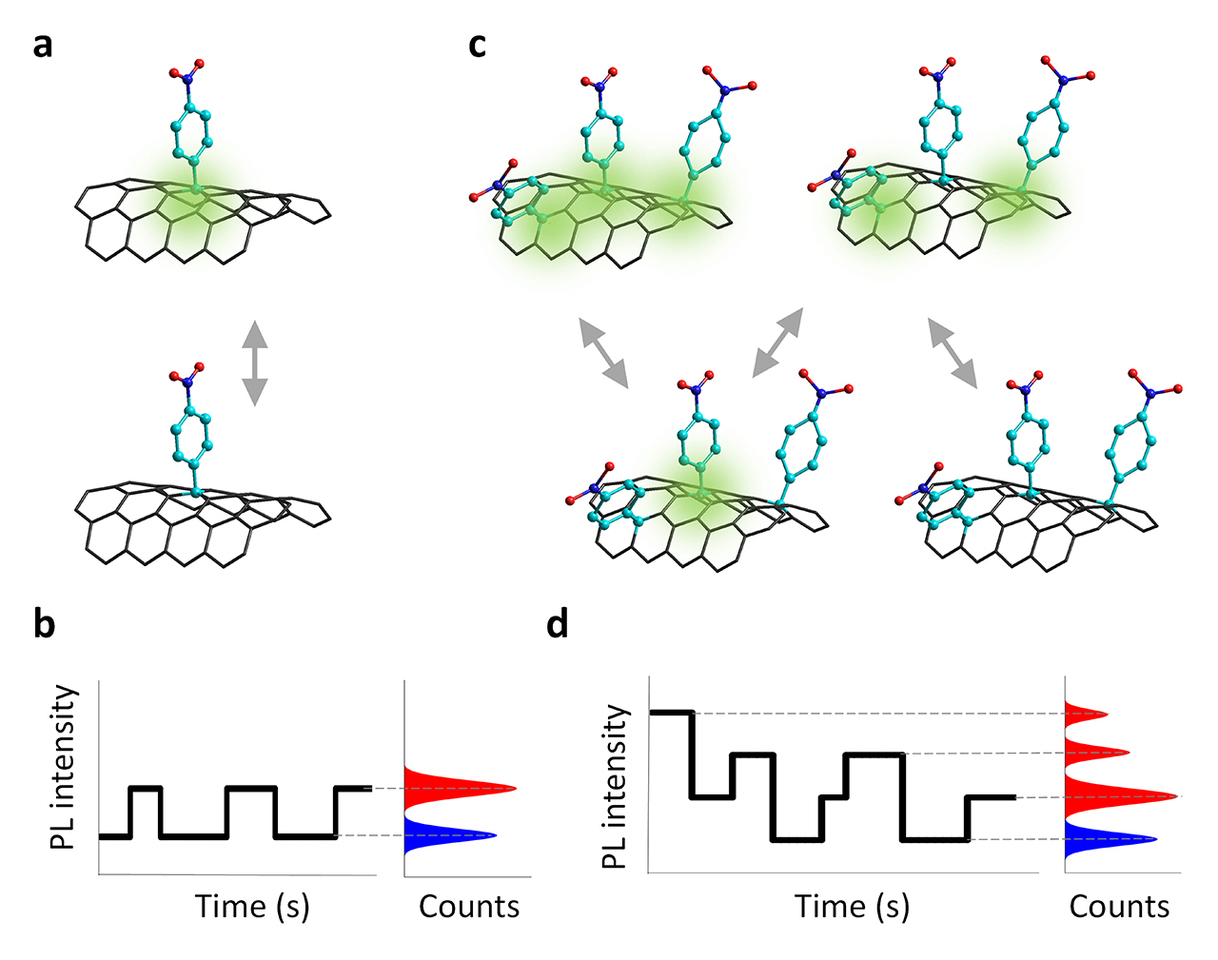
The shortwave infrared (900–1700 nm) is a spectral window that presents new opportunities in deep-tissue bioimaging, chemically specific sensing, telecommunications, and quantum technologies. Materials that emit light in this region have primarily been limited to quantum dots and carbon nanotubes. However, the last decade has seen a rapidly emerging field of “organic color centers” (also known as “fluorescent quantum defects”) that has significantly expanded the possibilities in these areas. Through rich organic chemistry, these light emitting molecular defects can be covalently implanted in carbon nanotube semiconductor hosts to completely alter the fate of excitons and significantly impact the chemical and electronic properties of the host materials. These organic color centers are quantum, two-level systems that trap and localize excitons, brighten dark excitons, emit light as single photons, and are molecularly tunable, building a strong new bond between solid-state physics and traditional organic chemistry. The collective advances in this new field have recently been reviewed by Wang and colleagues in the June issue of Nature Reviews Chemistry (Brozena et al. Nat. Rev. Chem., 2019).
In addition to this review has come the timely publication of a new method for high-throughput single defect imaging in the shortwave infrared. This study, just published in Nature Communications (Wu et al. Nat. Commun. 2019, DOI: 10.1038/s41467-019-10788-8), enables individual organic color centers to be resolved – despite the fact that these atomic defects are significantly smaller in size compared to the diffraction limit of light. The ability to study fluorescent defects at the single defect limit circumvents the limitations imposed by ensemble averaging and can unravel significantly more details.

Traditionally, the atomic size of defects and the high noise of infrared detectors have posed significant challenges to such studies. For instance, we previously used super-resolution photoluminescence imaging to resolve defects in ultrashort carbon nanotubes with 25 nm resolution (Danné et al. ACS Nano 2018, 12, 6, 6059-6065). However, such resolution still falls short of resolving organic color centers, particularly when they are clustered in groups, as is often the case. In this new work, we show it is possible to count organic color centers at the single defect limit by correlating spectral imaging with their stochastic fluorescent blinking behavior. Notably, by cooling the InGaAs detector array to −190 °C and implementing a nondestructive readout scheme, we are able to capture low light fluorescent events in the shortwave infrared with a signal-to-noise ratio improved by more than three orders-of-magnitude. As a demonstration, we have used this single-defect spectroscopy technique to resolve individual chemical defects in carbon nanotube semiconductors with a resolution of 15 nm and simultaneously collect a full spectrum for each defect within the entire field of view, enabling us to unambiguously determine the chemical identities and fluorescent properties of such organic color centers. This shortwave infrared imaging technique may open opportunities to spectrally map the atomic-scale organic color centers and other fluorescent defects in a range of host materials, and we can’t wait to see what future research will unfold.
This blog is contributed by Xiaojian Wu, Alexandra Brozena, and YuHuang Wang.
Follow the Topic
-
Nature Communications

An open access, multidisciplinary journal dedicated to publishing high-quality research in all areas of the biological, health, physical, chemical and Earth sciences.
Related Collections
With Collections, you can get published faster and increase your visibility.
Women's Health
Publishing Model: Hybrid
Deadline: Ongoing
Advances in neurodegenerative diseases
Publishing Model: Hybrid
Deadline: Dec 24, 2025



Please sign in or register for FREE
If you are a registered user on Research Communities by Springer Nature, please sign in